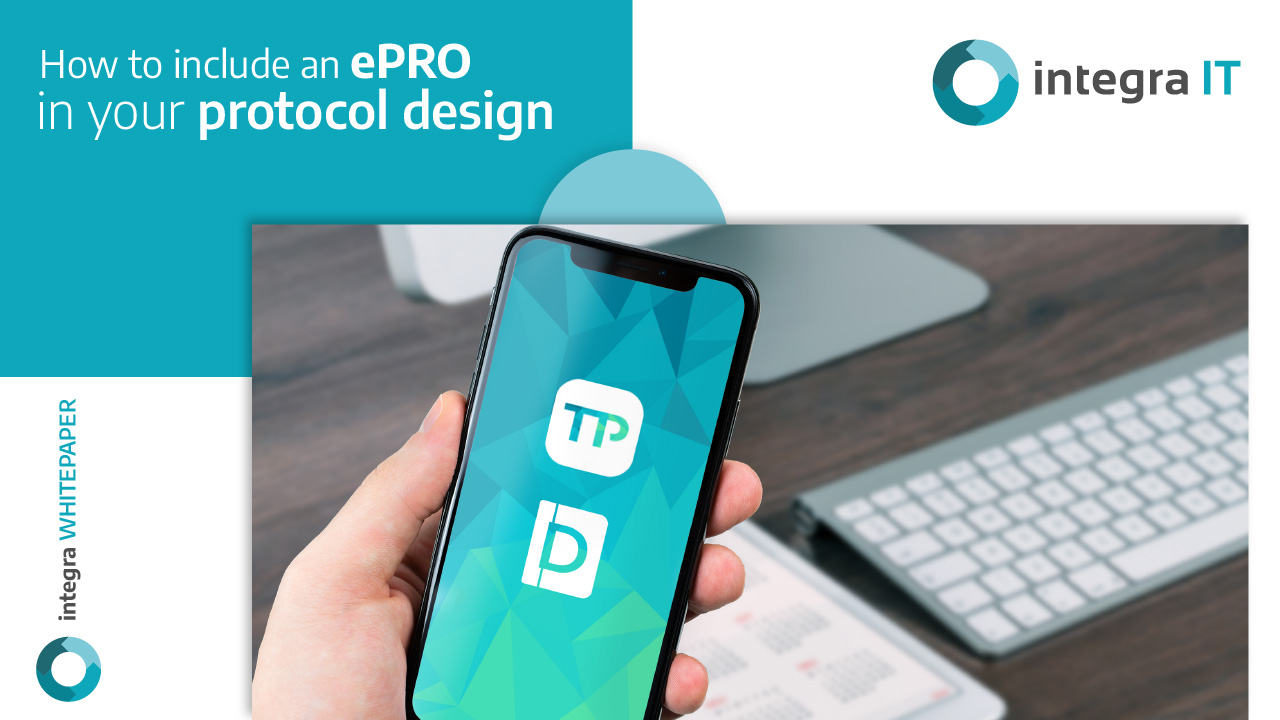From the ideation of the scientific question, sponsors can consider integrating ePRO tools in protocol designs. Decentralized and hybrid clinical trials can widen the data points and make the most of each trial. Here we share five steps to introduce an ePRO into a protocol:
- Define the objectives an ePRO tool can address: Identify the specific data points you want to capture from participants using ePRO tools. These objectives could include patient-reported symptoms, adverse events, treatment adherence, quality-of-life measures, lifestyle, context, or other relevant endpoints. Additionally, it is important to specify in the protocol the timing, frequency, and mode of the patient-reported outcomes to be captured.
- Determine the Study Population: Identify the target participant population for your study. Consider the disease characteristics, demographics, and technology access of the population. Factors like language, education, technology literacy, and internet access would be helpful in selecting the right vendor and tool.
- Choose the right ePRO Tool: Research and select technology that matches the trial needs. For example, consider characteristics such as user-friendliness, data security, scalability, integration capabilities, and analytic features. On-site support services in the local language and smartphone provision and logistics may be determining criteria, as these are complex tasks that affect the clinical trial’s overall performance and data opportunity. Also, therapeutic area-specific functionalities, like real-time alerts and notifications for participants, site staff, and the study team to act in a timely manner or have a Site to automatically conciliate subject reports like symptoms severity, in a version for the site in the same tool and transfer both data to the EDC, subject reported value and the PI conciliated/adjusted value.
- Include Training and Support Plans: Ensure the study participants and site staff receive appropriate training from the technology partner on how to use the ePRO tool. Integra IT guarantees technical support and assistance on-site and in the same language throughout the study duration and assists the site on how to handle elderly populations and underrepresented populations in Low-Income Countries where participants are not used to using mobile applications and even email.
- Assess Regulatory and Ethical Considerations: Familiarize yourself with the regulatory requirements and ethical considerations for implementing ePRO tools in your study. Furthermore, ensure compliance with data privacy regulations, electronic informed consent procedures, and specific guidelines or requirements from local regulatory authorities. This includes the time it takes to submit screenshots of an eDiary or any type of form to the ethics committee.
By following these steps, you can effectively integrate ePRO tools into your protocol design and leverage the benefits of decentralized and hybrid clinical trials to enhance data collection and analysis. Gaining rich insights from patient-reported outcomes can impact future research or clinical practice; for example, studies have shown that an ePRO incorporation into oncology clinical research and ongoing clinical practice offers trustworthy knowledge for individual empowerment and prompt symptom intervention (1).
Another example is when using tools ePRO tool with mobile devices in trials such as vaccine clinical trials, events are triggered (e.g. cases or outcomes) resulting in less cases and events being missed and a more streamlined follow-up of such events and cases (2).
References:
- Trojan A, Leuthold N, Thomssen C, Rody A, Winder T, Jakob A, Egger C, Held U, Jackisch C. The Effect of Collaborative Reviews of Electronic Patient-Reported Outcomes on the Congruence of Patient- and Clinician-Reported Toxicity in Cancer Patients Receiving Systemic Therapy: Prospective, Multicenter, Observational Clinical Trial. J Med Internet Res. 2021 Aug 5;23(8):e29271. doi: 10.2196/29271. PMID: 34383675; PMCID: PMC8380582. Link: https://pubmed.ncbi.nlm.nih.gov/34383675/
- Curran D, Cabrera ES, Nelsen L. Patient-reported outcomes in vaccines research: relevance for decision-making. Hum Vaccin Immunother. 2022 Dec 31;18(1):1-8. doi: 10.1080/21645515.2021.1875762. Epub 2021 Feb 19. PMID: 33606595; PMCID: PMC8920246. Link: https://www.ncbi.nlm.nih.gov/pmc/articles/PMC8920246/










